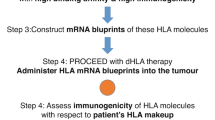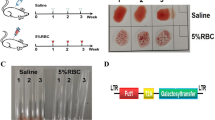Abstract
During studies of the ability of antilymphocyte serum (ALS) to suppress the immune mechanism of mice and thereby allow HeLa cells to grow into a large tumour in the mice, it was observed that many tumours continued to grow even after the ALS treatment had been stopped and full immunological competence of the mice had returned. The HeLa cells of such tumours appeared to be unchanged in their ability to induce further tumours in ALS treated mice to which they were transferred and, furthermore, the mice which were carrying such tumours in the presence of immunological competence were able to reject additional injections of HeLa cells or other human tumour cells. The four possible explanations for this phenomenon, (i) depression of cellular response; (ii) local reaction at the graft site; (iii) the presence of a blocking factor; and (iv) the elevation of the humoral response, have been investigated.
This is a preview of subscription content, access via your institution
Access options
Subscribe to this journal
Receive 24 print issues and online access
$259.00 per year
only $10.79 per issue
Buy this article
- Purchase on Springer Link
- Instant access to full article PDF
Prices may be subject to local taxes which are calculated during checkout
Similar content being viewed by others
Rights and permissions
About this article
Cite this article
Franks, C., Curtis, K. & Perkins, F. Long-term Survival of HeLa Tumours in Mice Treated with Antilymphocyte Serum. Br J Cancer 27, 390–395 (1973). https://doi.org/10.1038/bjc.1973.46
Issue Date:
DOI: https://doi.org/10.1038/bjc.1973.46
This article is cited by
-
Human tumours in mice confirmed by chromosomal analysis
Nature (1974)



